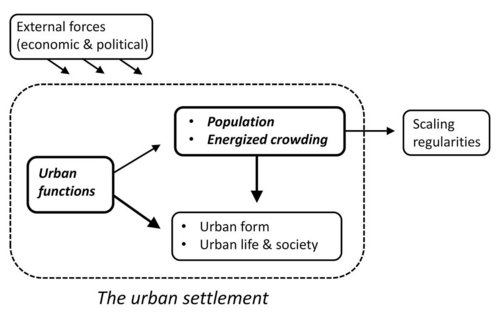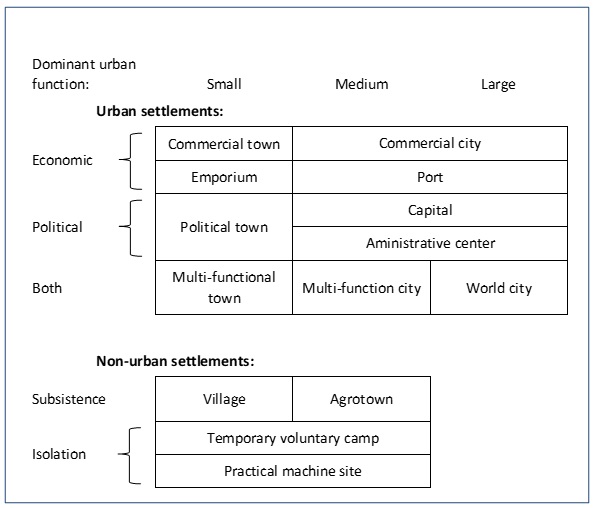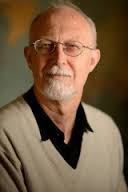
Michael E. Smith is an archaeologist specializing in the Aztecs of central Mexico. His professional title is Professor of Anthropology in the School of Human Evolution and Social Change (formerly the Department of Anthropology) at Arizona State University. He has directed fieldwork projects at Aztec sites in the Mexican state of Morelos and in the Toluca Valley. His research focuses on two broad areas: Aztec social and economic organization, and the comparative analysis of ancient urban societies. His theoretical and comparative interests derive from a scientific, materialist, political-economy approach to ancient state societies. He has published on topics of urbanism, imperialism, households, and economic organization.
His many publications include:
During his stay (April-July 2018), Michael E. Smith will give a lecture series entitled Cities Before the Modern Era: Population, Functions and Urban Life. The lecture series explores the nature of early cities using a simple causal model (see diagram) that explains variations in urban life and society, and urban form, with respect to three kinds of forces:
1. Population (population size and density, and the role of energized crowding)
2. Urban functions (the effect of urban activities on areas outside a city)
3. External economic and political forces

Michael explore similarities and differences among cities and towns before the modern era, and also include comparisons with cities today. The scope of the lecture series includes archaeological and historical data on settlements prior to the Early Modern Period in Europe, and prior to European conquest and colonization in other parts of the world. A major conclusion of the lecture series is that many of the important processes traditionally associated with urbanism in fact existed in non-urban settlements, including Neolithic villages prior to the Urban Revolution, and non-urban settlements today.
The lecture series will contain many case studies of individual cities, or groups of cities, and these will carry much of the argument. Michael will need help with research on many or most of the case studies (in order to use examples that fit well with the work of UrbNet), and they will require the inclusion of many plans and images in the lecture series. Michael may make use of a typology of settlements, organized by size and urban functions (he has not decided yet on the role, if any, of this typology in the lecture series).

The lecture series includes the following lectures:
Lecture 1: What is a city? Why do people live in cities?
Lecture 2: Why do Cities exist?
Lecture 3: The size of cities in the ancient world
Lecture 4: The political and economic functions of cities
Lecture 5: Life in early cities: social organization, neighborhoods, and inequality

Maura Heyn’s research focuses on funerary sculpture in the Roman empire, particularly the sculpture from the Syrian city of Palmyra. She is interested in issues of social identity, cultural change, ancient clothing and dress, and the archaeology of the body. Her current book project, Provincial Life, Roman Death: The Funerary Portraiture of Palmyra, analyzes the multifaceted ways in which funerary sculpture mediated social relations in the aftermath of Roman conquest. Other research interests include the mural decoration of the Temple of Bel in Dura-Europos, and the significance of hand gestures in Roman funerary portraiture.
Her many publications include:
During her stay (1 June - 31 July 2018), Maura Heyn will co-organize the workshop "Attributes in Palmyrene Funerary Sculpture" within the framework of the Palmyra Portrait Project.

Over the past thirty years Roland Fletcher has developed a global and interdisciplinary perspective in Archaeology, that integrates research, teaching and service. His fields of expertise are the theory and philosophy of archaeology, the study of settlement growth and decline and the analysis of large-scale cultural phenomena over time. In 1995 Fletcher published The Limits of Settlement Growth: a theoretical outline - an analysis of the past 15,000 years of settlement-growth and decline - with Cambridge University Press. Fletcher has an international reputation as a radical theorist and as the instigator of the Greater Angkor Project, which derives from his theoretical work and is part of a major research program in Cambodia. The program of research on Angkor has developed international collaborations for the University of Sydney and has enhanced its public profile through media presentations, such as the National Geographic International TV program 'Lost City'. The Angkor research team also serves the intentional community through the applied research of the Living with Heritage Project at Angkor, in collaboration with the Cambodian government and UNESCO.
Fletcher's many publications include:
During his stay (8-30 June 2018), Roland Fletcher will give a lecture series (title: Material Behaviour) containing three lectures and three discussion-seminars (titles: Principles, Evolution and Behaviour).
The lecture series includes the following lectures:
Lecture 1: Material Behaviour: Principles.
Lecture 2: Material Behaviour: Evolution.
Lecture 3: Material Behaviour: Behaviour.
The workshop series includes the following lectures:
Workshop 1: Material Behaviour: Principles.
Workshop 2: Material Behaviour: Evolution.
Workshop 3: Material Behaviour: Behaviour.